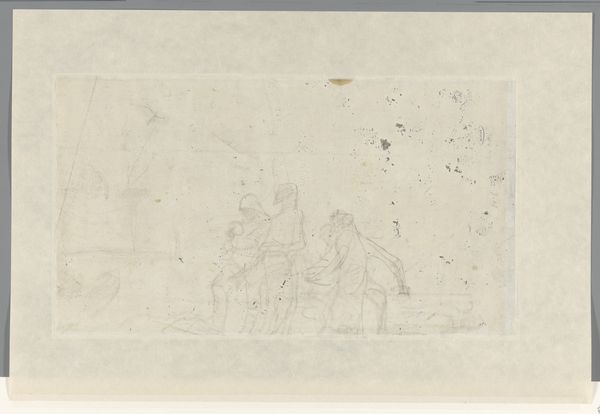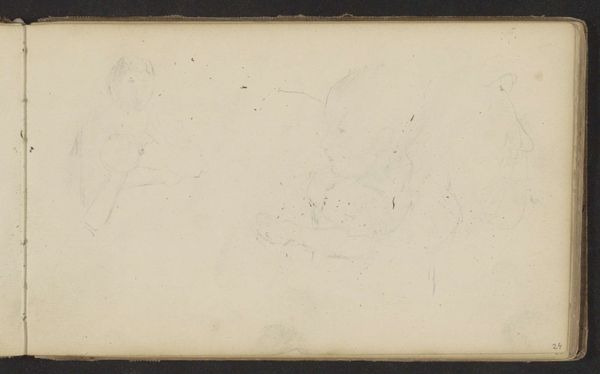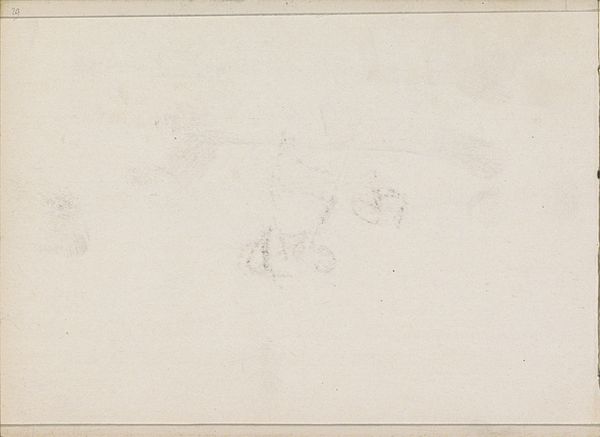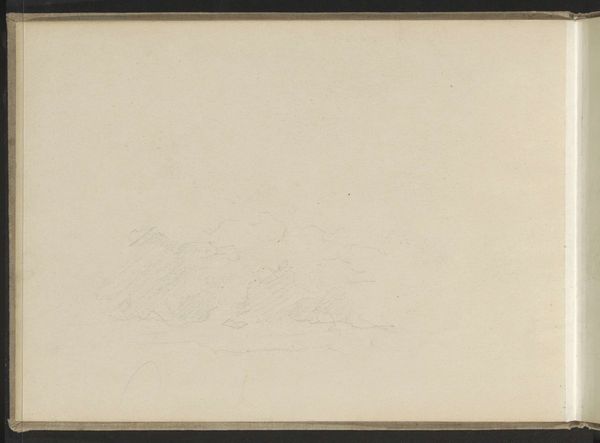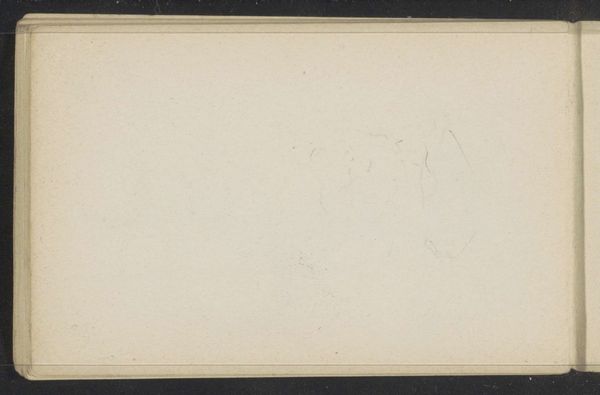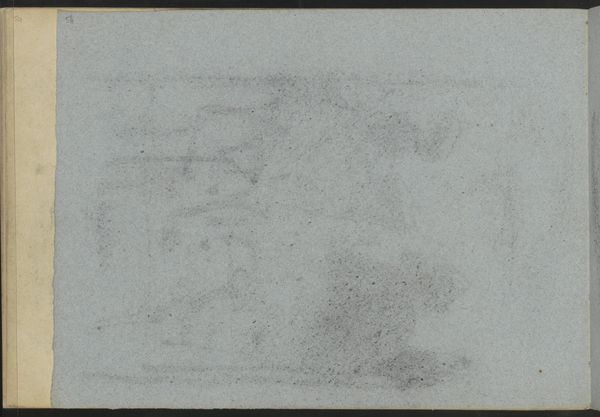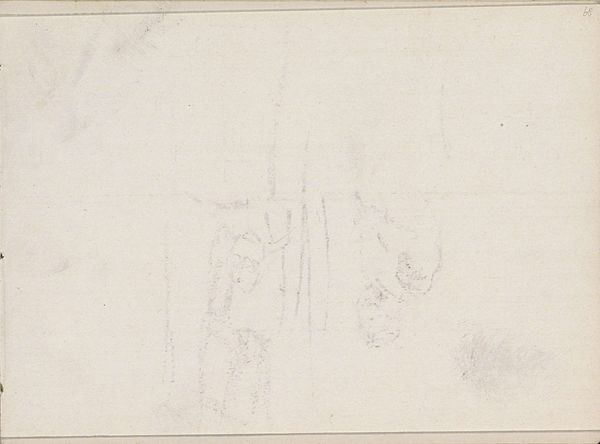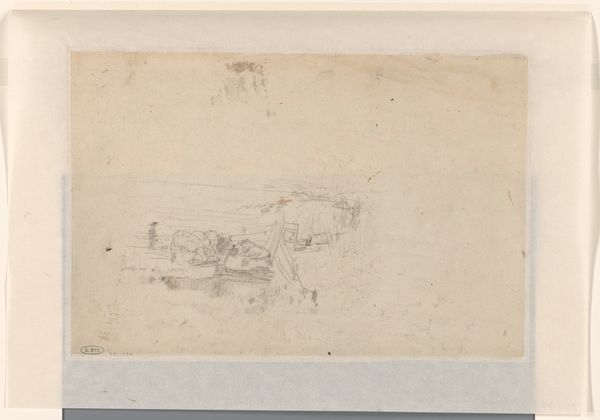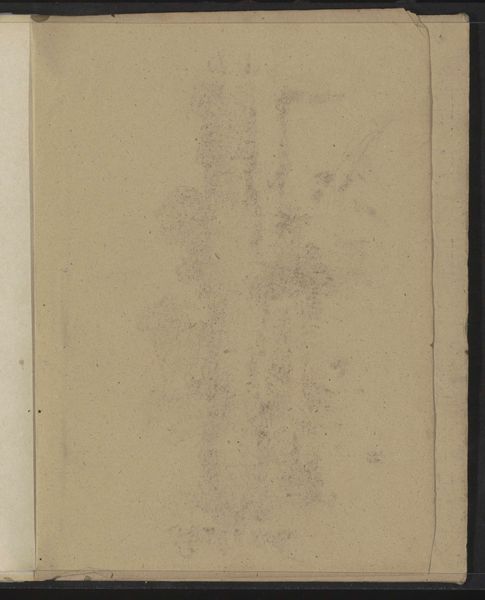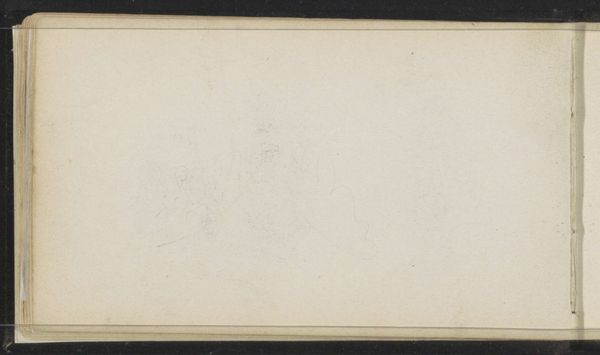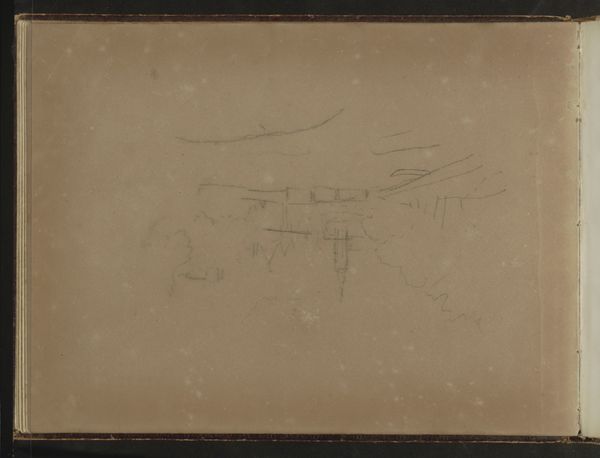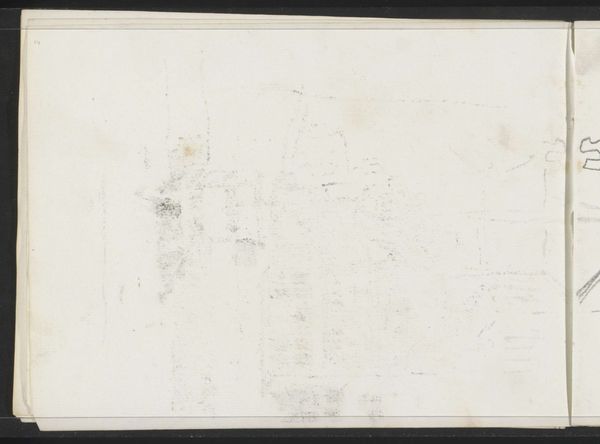
Copyright: Rijks Museum: Open Domain
Curator: Looking at this piece, one might feel transported to another time. This pencil drawing on paper, attributed to Reinier Craeyvanger and created sometime between 1822 and 1880, is entitled "Abklatsch van de krijttekening op blad 7 recto," residing here at the Rijksmuseum. Editor: The immediate impression is one of haunting ethereality; wisps of a landscape barely grasped on paper. A ghost of an image… intriguing in its minimalism and somewhat forlorn mood, wouldn’t you agree? Curator: Precisely. There's an undeniably Romantic sentiment embedded within. Notice how little is actually *defined*. We have the barest suggestion of forms— perhaps a thatched structure. In its incompleteness, there is also this intense invitation for introspection. What does this signify for our modern viewing of history, a quick shadow? Editor: Interesting interpretation. It does hint at that late 19th century embrace of the melancholic, a focus on decay, shadow, ruins as representative of history. In terms of the art market, it seems like works like these gave viewers a more “digestible” sense of romantic, sublime imagery compared to grand historical painting that, back then, were the subject of constant sociopolitical squabbles about which figures to showcase, how to portray them, and for what purpose. This drawing side-steps these pitfalls, right? Curator: Absolutely. And the choice of such ephemeral material-- pencil on paper hints at transience. Think of the ease with which a drawing can be erased, lost or torn—almost allegorical for a lost memory, or the fleeting nature of personal reflection! The work itself acts as a vessel, and not necessarily something meant to hold detail for future historians. Editor: I wonder too, the "Abklatsch," this suggests a rubbing. The trace of another drawing... almost like we are seeing a faint recollection. Was this an artifact meant to capture or communicate a symbolic act of preserving memory itself, or was it merely practice, left unfinished? Curator: An evocative question indeed. Perhaps its purpose lies in precisely this ambiguity, allowing the viewer to engage directly with their own interpretation. Editor: On reflection, perhaps the beauty here resides not in any concrete meaning, but the invitation it gives for individual projection, doesn't it? Curator: Beautifully put. It leaves us, in a very real sense, contemplating both the subject of the sketch and ourselves in equal measure.
Comments
No comments
Be the first to comment and join the conversation on the ultimate creative platform.
